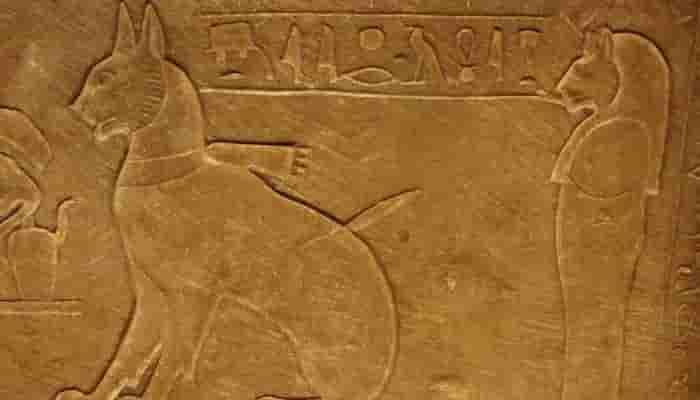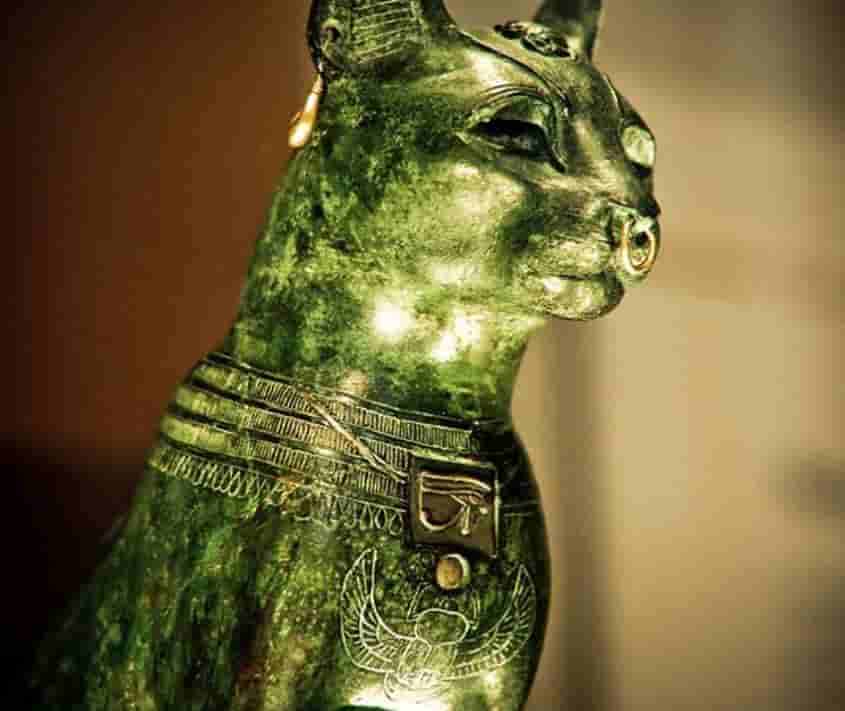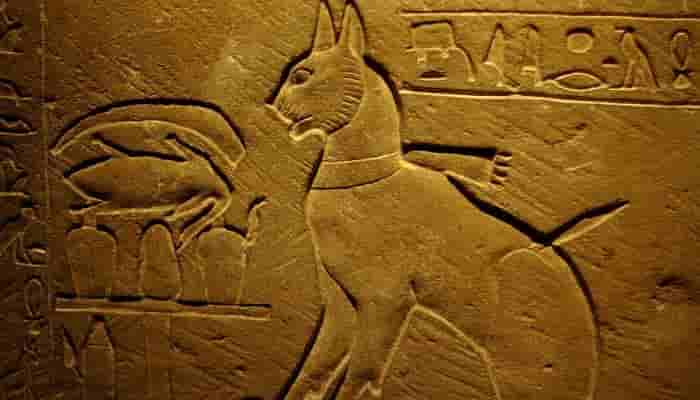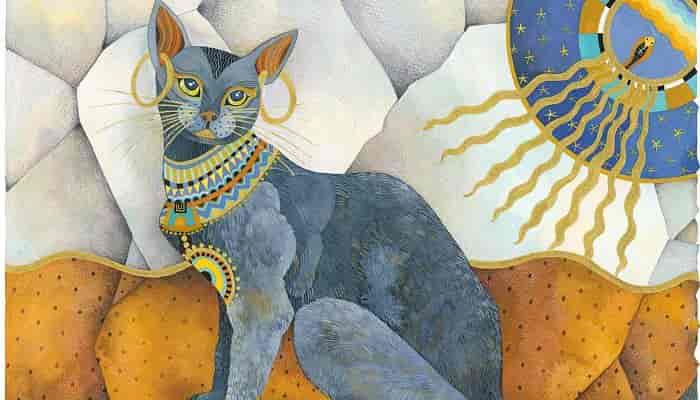On numerous occasions, we have observed that cats in ancient Egypt, specifically during the New Kingdom (1550-1069 BC), were animals revered by the inhabitants.
This reverence stemmed from two reasons: firstly, the worship of the gods, and secondly, the cat’s role as a domestic animal, both intricately linked.
Beginning with the first reason, we encounter the gods Ra and Bastet. In ancient Egyptian religion, Bastet personifies the warm rays of the sun.
She is depicted as a woman with a cat’s head or as an entire cat, and she defended Ra, the god of the Sun, against the attacks of the Apophis snake.
A vivid example of this scene is found in the tomb of Inherkhau. It’s worth mentioning that Ra, in some old myths, also took on the form of a cat to descend to earth.
During the New Kingdom, the cat was considered an incarnation of the Sun god and the embodiment of the goddess Bastet. The ancient Egyptians sought the favor of the goddess, who symbolized the power of the sun, protection of the home, and the joy of life.
This leads us to the second reason: what roles did cats play in ancient Egypt?
It’s believed that domestication began during the 3rd millennium BC. The cat became a cherished companion animal appreciated for its gentleness, charm, mysterious behavior, and primarily, for its protective nature over the home.
They were highly valued due to their ability to reduce the population of mice, which wreaked havoc in the cereal fields of the Nile—an area of great economic importance.
Moreover, cats in ancient Egypt maintained cleanliness in homes by hunting rats and snakes, thereby eliminating carriers of serious diseases such as the plague. Consequently, the surroundings of nearby homes became safer.
The cat gained increasing significance over the years, both in religious and social contexts. During the New Kingdom, cats were trained for bird hunting.
Ancient Egyptians held great reverence for their cats’ lives. When a family’s cat passed away, they conducted a funeral ritual. They shaved their eyebrows as a sign of grief and mourning. If they had the means, the cat was embalmed in a special sarcophagus.
The cat was transported to the city of Bubastis for a solemn burial, accompanied by cat-shaped figures placed as offerings to gain favor from the goddess Bastet.
The importance of cats in ancient Egypt was so profound that strict laws were created concerning them. Even the pharaoh was unable to pardon anyone who violated these laws. Greek historians documented these laws in their texts.
Diodorus Siculus recounts an incident where the populace of Alexandria rallied against a Roman citizen who accidentally killed a cat, demanding the death penalty for him.
Herodotus recounts anecdotes regarding fire and the laws regarding cats:
“When a fire breaks out, something remarkable occurs with cats. People remain at a certain distance, caring for the cats and showing little concern for extinguishing the fire. The cats, however, manage to slip through the crowd or leap over heads and rush into the fire. When this happens, the Egyptians feel great sorrow.”
“Anyone who intentionally kills one of these animals is sentenced to death. If the act is unintentional, they must pay a fine determined in each case by the priests…”
Ctesias mentions the Battle of Pelusium (525 BC), where the Persian king Cambyses II and the Egyptian pharaoh, Psametik III, clashed. It’s said that the Persians devised a strategy to gain advantage by placing representations of the goddess Bastet on their shields. They captured cats and released them during the battle, causing the Egyptians to fight cautiously to avoid harming the cats.
Following the battle, the ancient Egyptians sought refuge in Pelusium. During the siege, Cambyses II continued using cats to his advantage. Soldiers hurled cats towards the fortress, forcing Egyptian archers to shoot carefully.
The worship of Bastet started declining around 350 AD and completely disappeared in 390 AD by imperial decree. Nevertheless, numerous wall paintings depict various aspects of cat life in ancient Egyptian society.
In 1890, archaeologists discovered an ancient cemetery in Tell-Basta, the former Bubastis, containing three hundred thousand mummified cats, each placed in a small coffin shaped like the animal.
Evidently, the priests established a profitable business selling mummified cats, as many inhabitants considered it an honor to be buried alongside these mummies, including the pharaohs.
Unfortunately, very few of them remain today due to lack of interest at the time. A British merchant transported those mummies in the hold of a ship to England, crushing and selling them as fertilizer to farmers in the port of Liverpool. Only a handful were saved from that fate.









